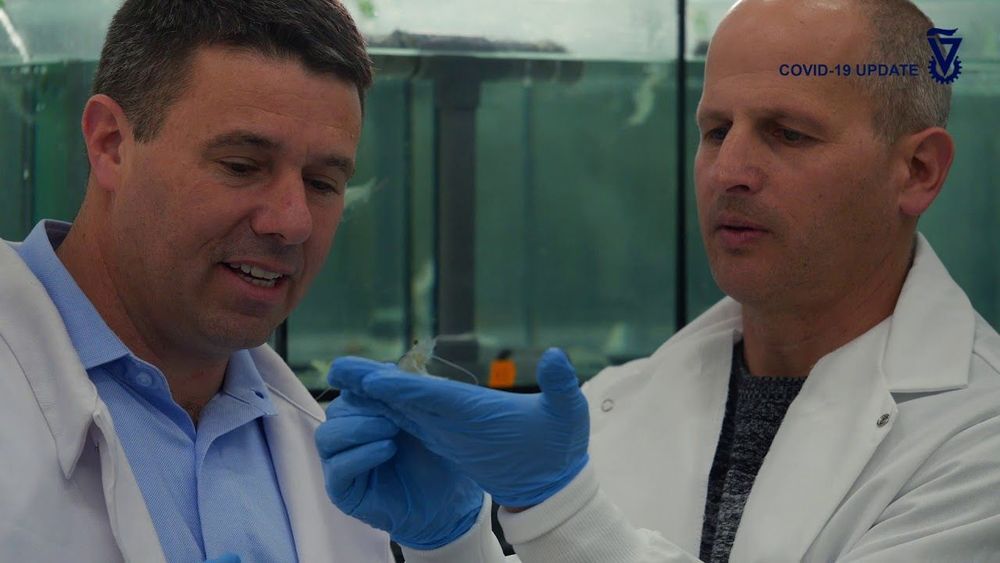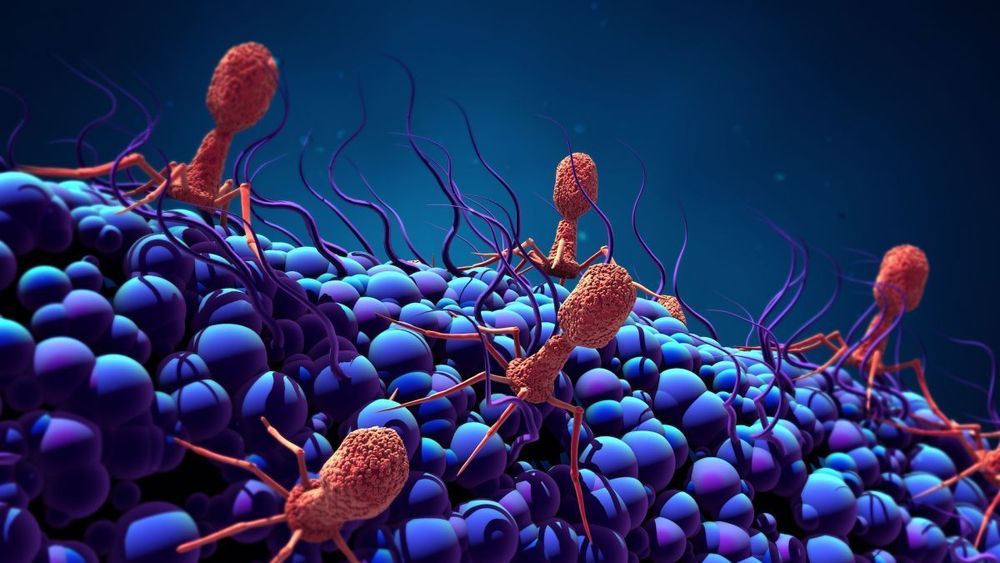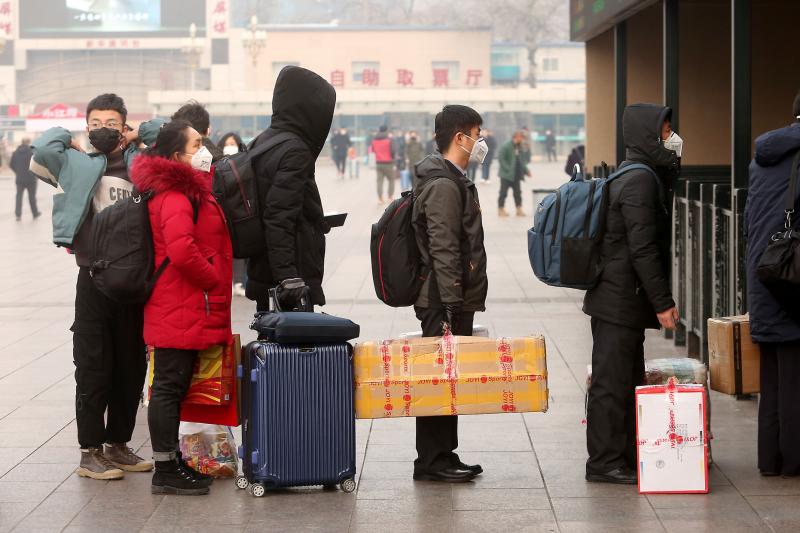Archive for the ‘food’ category: Page 196
Mar 27, 2020
Making sense of cells
Posted by Xavier Rosseel in categories: biotech/medical, computing, food, mathematics, neuroscience
Our body’s ability to detect disease, foreign material, and the location of food sources and toxins is all determined by a cocktail of chemicals that surround our cells, as well as our cells’ ability to ‘read’ these chemicals. Cells are highly sensitive. In fact, our immune system can be triggered by the presence of just one foreign molecule or ion. Yet researchers don’t know how cells achieve this level of sensitivity.
Now, scientists at the Biological Physics Theory Unit at Okinawa Institute of Science and Technology Graduate University (OIST) and collaborators at City University of New York have created a simple model that is providing some answers. They have used this model to determine which techniques a cell might employ to increase its sensitivity in different circumstances, shedding light on how the biochemical networks in our bodies operate.
“This model takes a complex biological system and abstracts it into a simple, understandable mathematical framework,” said Dr. Vudtiwat Ngampruetikorn, former postdoctoral researcher at OIST and the first author of the research paper, which was published in Nature Communications. “We can use it to tease apart how cells might choose to spend their energy budget, depending on the world around them and other cells they might be talking to.”
Mar 26, 2020
Israeli scientist’s shrimp antiviral could be adapted for coronavirus
Posted by Omuterema Akhahenda in categories: biotech/medical, engineering, food

The 43-year-old scientist is a member of the Technion’s Wolfson Faculty of Chemical Engineering, and his lab first developed a food additive to boost the immune system of animals to protect them from contracting viral diseases. This invention formed the basis of his own commercialized start-up company, ViAqua Therapeutics, which focused the development of the drug on shrimp, as over 30% of the global shrimp population is wiped out yearly by a viral disease known as white spot syndrome.
Israeli scientist and entrepreneur Prof. Avi Schroeder is working on a preventative drug for the coronavirus by adapting a food additive designed for shrimp.
Continue reading “Israeli scientist’s shrimp antiviral could be adapted for coronavirus” »
Mar 25, 2020
Mapping the cannabis genome to improve crops and health
Posted by Quinn Sena in categories: biotech/medical, food, genetics, health
:ooooo.
Unlocking the full potential of cannabis for agriculture and human health will require a co-ordinated scientific effort to assemble and map the cannabis genome, says a just-published international study led by University of Saskatchewan researchers.
In a major statistical analysis of existing data and studies published in the Annual Review of Plant Biology, the authors conclude there are large gaps in the scientific knowledge of this high-demand, multi-purpose crop.
Continue reading “Mapping the cannabis genome to improve crops and health” »

Ladies Monday with ReallyGraceful.
Editors Note: While we have all been preoccupied with the relevant story of the day, ReallyGraceful has covered a couple of items that you may have missed over the past couple of weeks.
Mar 22, 2020
DARPA is Building a Robotic Space Mechanic to Fix Satellites in Orbit
Posted by Quinn Sena in categories: biotech/medical, food, military, robotics/AI, satellites
DARPA, the Defense Advanced Research Projects Agency that’s responsible for developing emerging technologies for the U.S. military, is building a new high-tech spacecraft — and it’s armed. In an age of Space Force and burgeoning threats like hunter-killer satellites, this might not sound too surprising. But you’re misunderstanding. DARPA’s new spacecraft, currently “in the thick of it” when it comes to development, is armed. As in, it has arms. Like the ones you use for grabbing things.
Armed robots aren’t new. Mechanical robot arms are increasingly widespread here on Earth. Robot arms have been used to carry out complex surgery and flip burgers. Attached to undersea exploration vehicles, they’ve been used to probe submerged wrecks. They’ve been used to open doors, defuse bombs, and decommission nuclear power plants. They’re pretty darn versatile. But space is another matter entirely.
Mar 19, 2020
Antibiotics weaken flu defenses in the lung
Posted by Nicholi Avery in categories: biotech/medical, food, sustainability
Hmm… are people with reduced lung capacity after recovering from the coronavirus more susceptible to getting the flu? Or does taking antibiotics increase one’s risk getting the coronavirus since it attacks the respiratory system?
Antibiotics can leave the lung vulnerable to flu viruses, leading to significantly worse infections and symptoms, finds a new study in mice led by the Francis Crick Institute.
The research, published in Cell Reports, discovered that signals from gut bacteria help to maintain a first line of defence in the lining of the lung. When mice with healthy gut bacteria were infected with the flu, around 80% of them survived. However, only a third survived if they were given antibiotics before being infected.
“We found that antibiotics can wipe out early flu resistance, adding further evidence that they should not be taken or prescribed lightly,” explains Dr Andreas Wack, who led the research at the Francis Crick Institute. “Inappropriate use not only promotes antibiotic resistance and kills helpful gut bacteria, but may also leave us more vulnerable to viruses. This could be relevant not only in humans but also livestock animals, as many farms around the world use antibiotics prophylactically. Further research in these environments is urgently needed to see whether this makes them more susceptible to viral infections.”
Mar 19, 2020
This Austin Company Just Announced the First At-Home COVID-19 Test
Posted by Genevieve Klien in categories: biotech/medical, business, food, government
On Thursday, March 18, Austin-based Everlywell announced that it will begin selling home tests for COVID-19 beginning Monday, March 23. The business already offers dozens of at-home testing kits for anything from cholesterol levels to fertility to food sensitivities, but it is the first U.S. company to announce an at-home COVID-19 test. Everlywell has an initial supply of 30,000 COVID-19 tests and is working with multiple laboratories to scale that number to 250,000 tests weekly.
The test can be requested online for people experiencing COVID-19 symptoms. To access a test, consumers can go to everlywell.com and complete a screening questionnaire. According to the website, the test is shipped to customers with everything needed to collect a sample at home and safely ship that sample to a CLIA-certified lab partner. (All of Everywell’s laboratory partners conducting COVID-19 testing are complying with the FDA’s Emergency Use Authorization for COVID-19 symptoms.) The samples will then be shipped to partner labs overnight, and secure digital results will be available online within 48 hours of the lab receiving the sample. Free telehealth consultations with an independent, board-certified physician will also be available to those with positive results. The test is $135, at no profit to Everlywell, and is covered by participating HSA and FSA providers. The brand has reached out to government officials to see if the test can be made available for free.
Mar 19, 2020
Reports: China’s first COVID-19 patient not linked to seafood market
Posted by Brent Ellman in categories: biotech/medical, food
Looking for patient 1; Mr. Chen :
On Jan. 24, the Lancet, an independent medical journal, published a study showing Wuhan’s first patient was not connected to the seafood market. A joint research team representing China’s Xishuangbanna Tropical Botanical Garden, Huanan Agricultural College and the Chinese Institute for Brain Research have also said the seafood market is not the source of COVID-19.
https://www.upi.com/…/Reports-Chinas-first-C…/1201582811760/
Continue reading “Reports: China’s first COVID-19 patient not linked to seafood market” »
Mar 16, 2020
Woolworth’s Launches ‘Elderly-Only’ Shopping Hour To Ensure Seniors Get Supplies
Posted by Tracy R. Atkins in categories: food, government
Australian supermarket giant Woolworths is introducing a dedicated shopping hour that will only allow elderly and disabled people to purchase items.
Starting tomorrow (March 17) shopping between 7 am and 8 am will be exclusive to elderly and disabled people with government-issued disability and pension cards.
These actions are a direct response to the chaotic panic buying and hoarding of essential items by other greedy shoppers which has left older people struggling to get their hands on food and toiletries.














